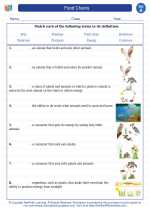Food Chains
A food chain is a series of organisms in which each organism feeds on the one below it in the chain. It represents the flow of energy and nutrients through an ecosystem.
Components of a Food Chain
1. Producers: These are organisms that produce their own food through photosynthesis, such as plants and algae.
2. Primary Consumers: These are herbivores that feed on producers, such as rabbits and deer.
3. Secondary Consumers: These are carnivores that feed on primary consumers, such as snakes and owls.
4. Tertiary Consumers: These are top carnivores that feed on secondary consumers, such as hawks and eagles.
5. Decomposers: These are organisms that break down dead plants and animals, such as fungi and bacteria.
Example of a Food Chain
Grass (Producer) → Grasshopper (Primary Consumer) → Frog (Secondary Consumer) → Snake (Tertiary Consumer)
Importance of Food Chains
Food chains are essential for maintaining the balance of ecosystems. They regulate the population of species and ensure the transfer of energy through the different trophic levels.
Study Guide Questions
- What are the different components of a food chain?
- Explain the role of producers in a food chain.
- Give an example of a complete food chain in a terrestrial ecosystem.
- Why are decomposers important in a food chain?
- Describe the flow of energy in a food chain.
◂Science Worksheets and Study Guides First Grade. Food Chains
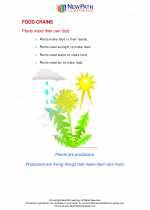
 Activity Lesson
Activity Lesson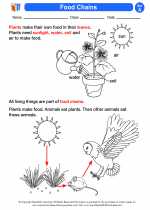
 Worksheet/Answer key
Worksheet/Answer key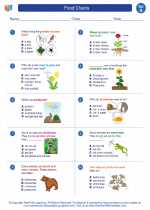
 Worksheet/Answer key
Worksheet/Answer key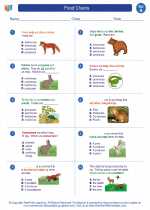
 Worksheet/Answer key
Worksheet/Answer key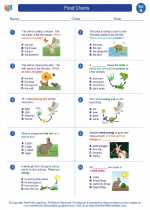
 Worksheet/Answer key
Worksheet/Answer key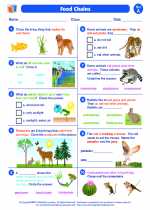
 Vocabulary/Answer key
Vocabulary/Answer key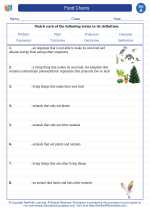
 Vocabulary/Answer key
Vocabulary/Answer key